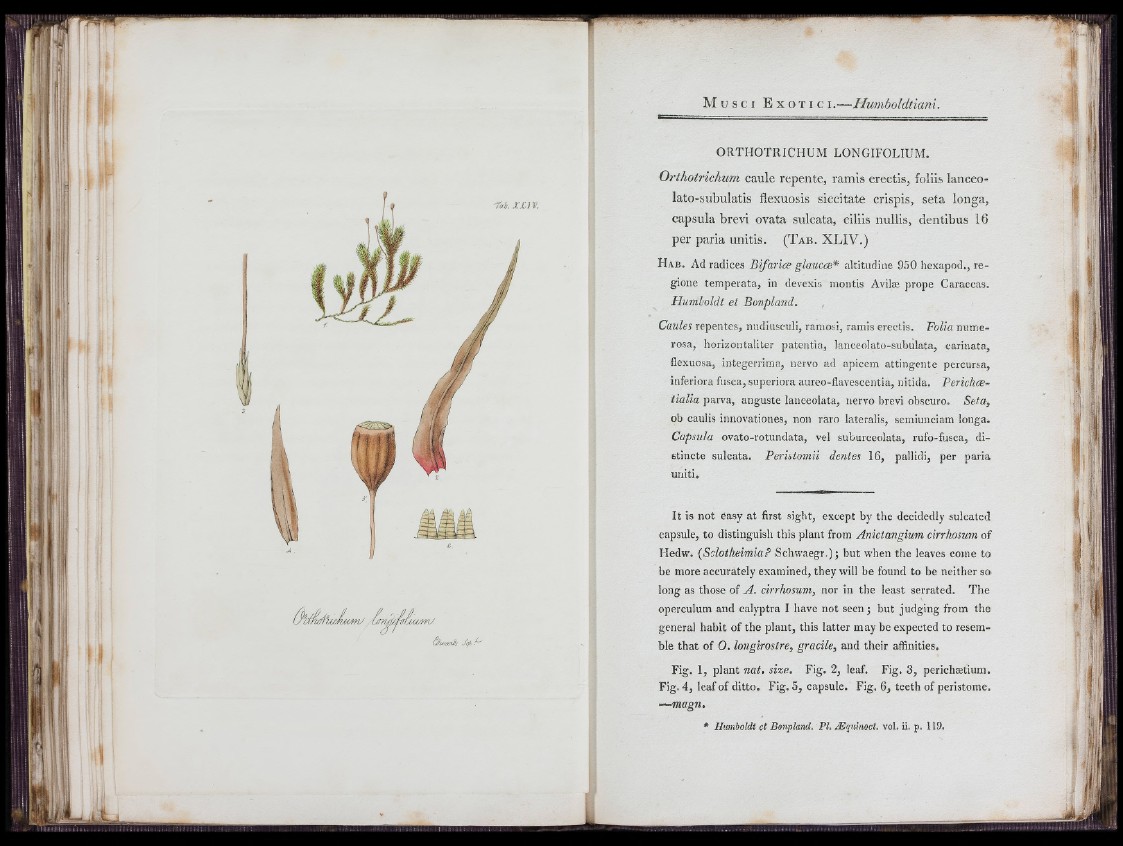
H
Xah. X lì V.
M.
ORTHOTRICHUM LONGIFOLIUM.
O rth o tr ic h um c au le re p en te , ram is ere c tis, foliis lanceo-
la to -su b u la tis flexuosis sic c ita te crispis, s e ta lo n g a ,
cap su la brevi ovata su lcata, ciliis n u llis , d en tib u s 16
p e r p a ria u n itis . (T a b . X L IV .)
Hab . Ad radices Bifariæ glaucoe* altitudine 950 hexapod., regione
temperata, in devexis montis Avilæ prope Caraccas.
Hamloldt et Bonpland.
Caules repentes, nudiusculi, ramosi, ramis erectis. Folia numerosa,
horizontaliter patentia, lanceoiato-subulata, carinata,
flexuosa, integerrima, nervo ad apicem attingente percursa,
inferiora fusca, superiora aureo-flavescentia, nitida. Perichcetialia
parva, anguste lanceolata, nervo brevi obscuro. Seta,
ob caulis innovationes, non raro lateralis, semiunciam longa.
Capsula ovato-rotundata, vel suburceolata, rufo-fusca, distincte
sulcata. Peristomii denles 16, pallidi, per paria
uniti.
I t is not easy at first sight, except by the decidedly sulcated
capsule, to distinguish this plant from Anictangium cirrhosum of
Hedw. {Sclotheimia? Schwaegr.); but when the leaves come to
be more accurately examined, they will be found to be neither so
long as those of A . cirrhosum, nor in the least serrated. The
operculum and calyptra I have not seen ; but judging from the
general habit of the plant, this latter may be expected to resemble
that of 0 . longirostre, gracile, and their affinities.
Fig. 1, plant nat, size. Fig. 2, leaf. Fig. 3, perichætium.
Fig. 4, leaf of ditto. Fig. 5, capsule. Fig. 6, teeth of peristome.
—magn,
* Humboldt et Bonpland. PL Æju'moct, vol. ii. p. 119.
i i
4 ft